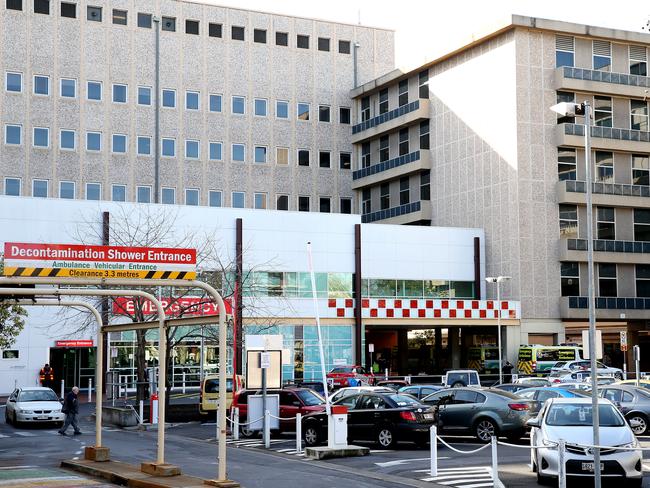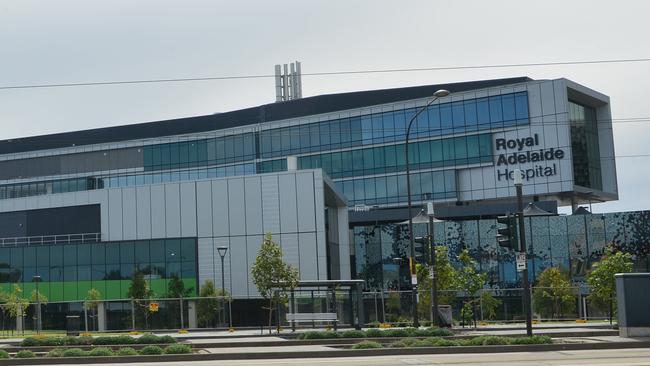SA Health moving elective surgery patients into different categories to claim they aren’t overdue
PATIENTS whose elective surgery has been delayed for up to six months will be shifted into different categories ahead of the move to the new RAH, allowing authorities to claim the procedures are no longer overdue.
SA News
Don't miss out on the headlines from SA News. Followed categories will be added to My News.
- Country Health needs ‘urgent’ $30m transfusion
- ‘Too late now’: Coroner blasts SA Health
- Medicos stood down over chemo bungle
- Investigation after stroke patients die — while specialists on leave at same time
PATIENTS whose elective surgery has been delayed for up to six months will be shifted into different categories ahead of the move to the new Royal Adelaide Hospital, allowing authorities to claim the procedures are no longer overdue.
The doctors’ union says “massaging the figures” puts patients at risk and jeopardises surgeons professionally, because the decision is an administrative one that is not based on doctors’ opinions.
RAH officials are implementing plans to move people off overdue surgery lists by changing their category status, an internal memo obtained by The Advertiser shows.
The hospital’s overdue list has blown out to more than 200 patients and the memo, dated May 15, states the list for semi-urgent patients will be revised.

But this will be based on time spent waiting rather than a clinical reassessment.
The overdue list includes 49 Category 2 patients who have been waiting more than 150 days for their surgery instead of the clinically recommended maximum of 90 days.
Six of these had been waiting more than 200 days — and one patient for 292 days — when the memo was issued.
They will be transferred to the Category 3 list, which has a recommended maximum waiting time of one year — and so will no longer be listed as being overdue for surgery.
The memo also says overnight elective surgery for category 2 and 3 patients at the RAH will cease from July 24, as the hospital “ramps down” in preparation for the move to new RAH on September 5.
The memo from Clinical Director of Surgery at Central Adelaide Local Health Network, Professor Guy Maddern, to surgeons notes: “The current performance against our key elective surgery indicators is drawing increasing attention to our scheduling practices and categorisation inconsistencies”.
“There are currently 49 Cat 2 patients that have waited over 150 days without their surgery, of which six are over 200 days and the longest wait 292 days,” it states.

“It is therefore realistic that all patients that have been assigned a surgery date beyond 90 days are reasonably clinically indicated to be assigned as a Category 3.
“As such, I have directed the elective waiting list to be revised and any patients who fit this criteria, have their category amended.”
The move follows a similar memo earlier this month revealed by The Advertiser to shift overdue Category 1 patients — the most urgent who are supposed to receive surgery within 30 days — into the semi-urgent Category 2 which has a three-month window.
A shortage of anaesthetic staff at the RAH, which has caused repeated cancellation of elective surgery lists, is partly to blame for the blowout.
SA Salaried Medical Officers Association senior industrial officer Bernadette Mulholland is seeking an urgent meeting with SA Health officials after RAH medical officers expressed concern for patients and their own professional standing.
“They really are concerned that this is trying to massage the figures to make them look good before the move to the new RAH without putting in the resources at the front end,” she said.
“It raises safety risks for patients and professional issues for the medical officers involved — it shows the pressure being put on them before the move.”
Doctors privately say it is “only a matter of time before a patient dies or has a compromised outcome due to these decisions being made by people who have absolutely no knowledge of the patients or the conditions that they are suffering”.
Chief executive of the Central Adelaide Local Health Network which covers the RAH, Jenny Richter, released a statement in response to inquiries from The Advertiser: “Professor Maddern is advising doctors to review their waiting lists to ensure the right patients are being treated in the right order, and those with the greatest need are seen first.
“Elective surgery patients are always assessed and prioritised by a clinician and it’s not unusual for patients to be re-categorised if a clinician deems there has been a misclassification or there is a change in the patient’s clinical condition.”
Prof Maddern’s memo also notes that last month, the RAH performed 690 elective surgeries, but many were done well before the patients were nearing overdue status.
“In short, with currently over 200 patients waiting beyond their category indicated wait time, we have preferentially treated 187 patients ahead of their expiration date,” the memo notes.
It goes on to say patients must be treated “in the order of their expiration date”.
SA Health’s website showing how many RAH patients are overdue for elective surgery in the three categories was unavailable on Monday due to ongoing technical problems.
Meanwhile, public hospital emergency departments were under pressure on Monday with chronic ambulance ramping at Flinders Medical Centre.
Understanding elective surgery categories
Elective surgery is non-emergency surgery which is medically necessary but can be delayed for at least 24 hours. There are three categories.
Category 1: Urgent. Has the potential to deteriorate quickly to the point where it may become an emergency. Admission for surgery desirable within 30 days.
Category 2: Semi-urgent. Causes pain, dysfunction or disability; unlikely to deteriorate quickly, unlikely to become an emergency. Admission for surgery desirable within 90 days.
Category 3: Non-urgent. Causes pain, dysfunction or disability; unlikely to deteriorate quickly, does not have the potential to become an emergency. Admission for surgery desirable within 365 days.
6



